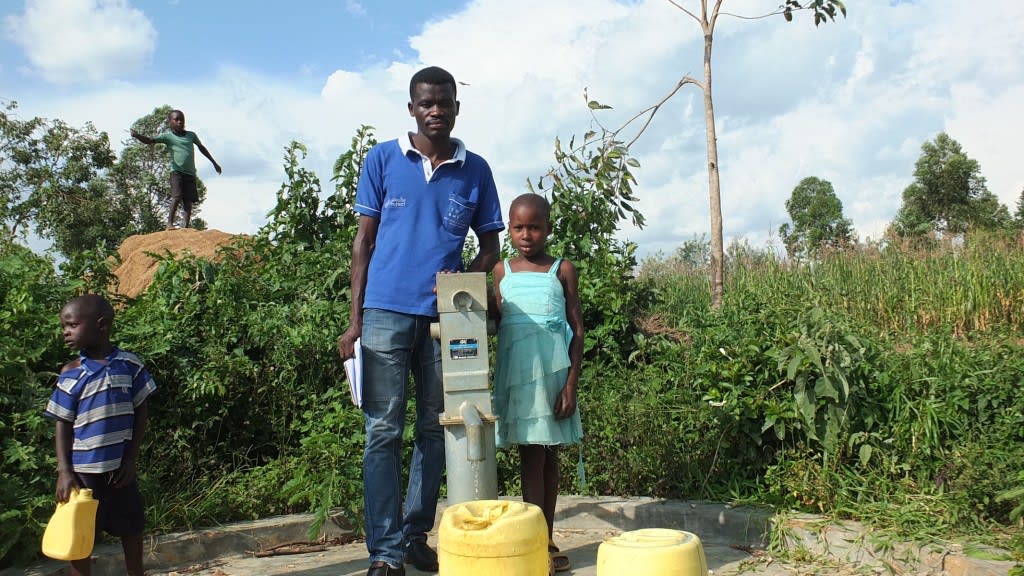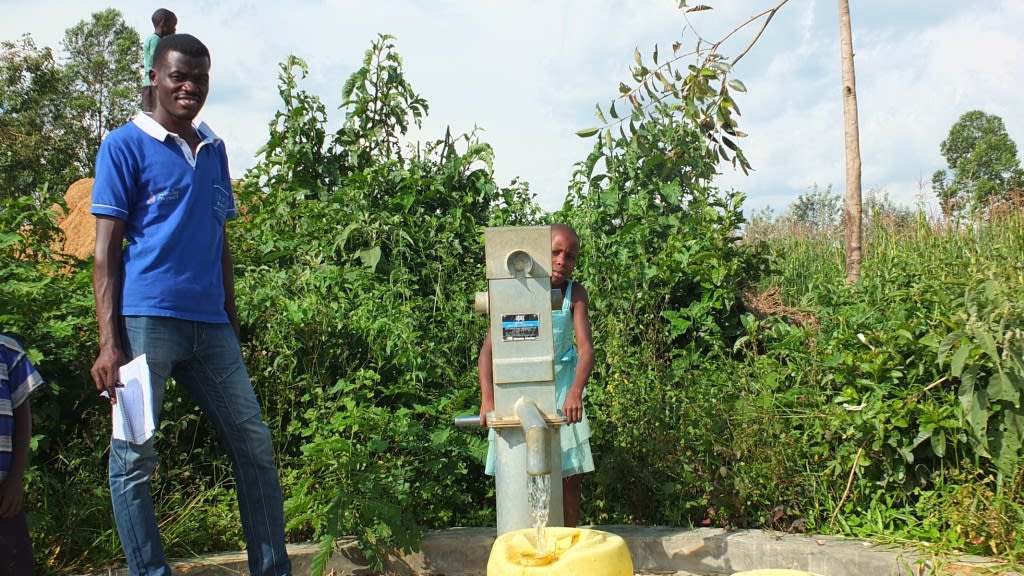This project is a part of our shared program with Safe Water and Sustainable Hygiene Initiative (SAWASHI). Our team is pleased to directly share the below report (edited for clarity, as needed).
Welcome to the Community
Luvambo Community rests on rocky land between two other communities, Mahusi and Namushiya. The huge stones dotting this area make it almost impossible to farm anything. To take advantage of this situation, community members earn money by breaking the stones and selling them to construction companies. This is the daily work done by men. Women are engaged in small business such as selling vegetables and bananas in the nearby shopping center, or just focus on doing household chores and taking care of the children.
The children attend the local public primary school. Most community members are Christians who belong to different denominations such as Seventh Day Adventist, Friends Church Quakers and Pentecostal Assembles of God.
Water Situation
Since men are the primary breadwinners, women are those most responsible for fetching water. This community does not have a local water source, so women and children are forced to leave the village in search of water. There are two springs that women and children frequent, one protected and one unprotected. An unprotected spring is in its natural state, but a protected spring has a discharge pipe and catchment area that protect the water from contaminants. Unfortunately, this protected spring is a lengthy walk. It's over two kilometers away! But if a family needs drinking water, this is the only place to go, since the unprotected spring is open to contaminants that are washed into the water during rains.
Once delivered back home, water is poured from the plastic jerrycan into a covered clay pot and reserved for drinking. Any remainder is left in the fetching container and used for domestic chores. If the water is visibly contaminated, a mother will filter out that dirt before serving it to her family. Filtering or not, community members commonly suffer from typhoid and diarrhea. Julius Shikuku told us, "My grandchildren are often taken to the nearby dispensary for vomiting and diarrhea."
Sanitation Situation
Around half of households in Luvambo Community have a pit latrine. These are made of mud and floored with wooden slats. Not many families have a bathing room for practicing personal hygiene, while a few more have helpful tools such as dish racks and clotheslines. We couldn't find anywhere for hand-washing.
Plans: Hygiene and Sanitation Training
Community members will be trained for two days on applicable hygiene and sanitation practices. The facilitator will use the PHAST (Participatory Hygiene and Sanitation Training) method to teach about topics like:
– Proper water storage and treatment
– How to build a hand-washing station and how to use it
– Proper food preparation and storage
– Waste disposal
– How disease is spread and how to block its transmission
We also plan to supplement the "DIY hand-washing stations" with two of our own more permanent solutions that come in the form of water taps on metal stands. These two stations will be delivered to the well location so that locals can wash their hands before using the pump. Training will also result in the formation of a water user committee which will oversee, manage, and maintain the rehabilitated well.
Plans: Well Rehabilitation
The well that we plan to rehabilitate is currently not in use, and is thus covered with a stone slab. This well was installed by the Kenya Finland Company in 1987, but became non-functional so long ago that nobody remembers quite what happened. The pump is missing, and there's no way for community members to access the water inside. We measured that the well has a total depth of 8.4 meters and a static water level of 3.9 meters.
Since the well has been unprotected by a well pad, it will require extensive cleaning. We will have to lower someone to clear out garbage and waste that has been washed in during the rains. A well pad will need to be constructed with cement so a new AfriDev pump can be installed. Right before installing the full pump, we will test pump to estimate the expected yield.
The rehabilitation of this old water source will bring clean water back to the community. Women and children waste a lot of valuable time trekking to and from the springs to fetch water that is easily contaminated on the way back home. We anticipate that with a well that yields safe drinking water, cases of typhoid and diarrhea will drastically decrease. People will not only have the extra time to work, but will also be healthy enough to work towards improving life in Luvambo.

 Protected Dug Well
Protected Dug Well























